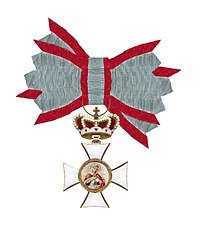
The House of Wittelsbach is a former Bavarian dynasty, with branches that have ruled over territories including the Electorate of Bavaria, the Electoral Palatinate, the Electorate of Cologne, Holland, Zeeland, Sweden, Denmark, Norway, Hungary, Bohemia, and Greece. Their ancestral lands of Bavaria and the Palatinate were prince-electorates, and the family had three of its members elected emperors and kings of the Holy Roman Empire. They ruled over the Kingdom of Bavaria which was created in 1805 and continued to exist until 1918.

Archduchess Gisela Louise Marie of Austria Princess of Hungary, Princess of Bohemia, Princess of Galicia and Lodomeria, Princess of Croatia, Slavonia and Dalmatia was the second daughter and eldest surviving child of Emperor Franz Joseph I and Empress Elisabeth of Austria. She became a Princess of Bavaria through her marriage to her second cousin, Leopold.
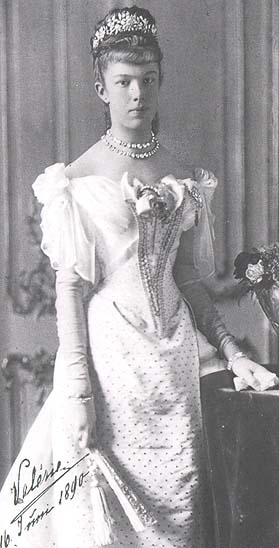
Archduchess Marie Valerie Mathilde Amalie of Austria was the youngest child of Emperor Franz Joseph I and Empress Elisabeth of Austria. She was usually called Valerie.

Maximilian I Joseph was Duke of Zweibrücken from 1795 to 1799, prince-elector of Bavaria from 1799 to 1806, then King of Bavaria from 1806 to 1825. He was a member of the House of Palatinate-Birkenfeld-Zweibrücken, a branch of the House of Wittelsbach.

Charles Theodore was a German nobleman of the Sulzbach branch of the House of Wittelsbach. He became Count Palatine of Sulzbach from his father Johann Christian in 1733, at the age of six. With the death of his cousin, Charles III Philip, he became Prince-elector and Count Palatine of the Rhine in 1742, being eighteen. In his fifties, he became Prince-Elector of Bavaria at the death of another cousin, Maximilian III Joseph, in 1777.

Charles III Philip was Elector Palatine, Count of Palatinate-Neuburg, and Duke of Jülich and Berg from 1716 to 1742. Until 1728 he was also Count of Megen.

The House of Leszczyński was a prominent Polish noble family. They were magnates in the Polish–Lithuanian Commonwealth and later became the royal family of Poland.
Sulzbach or Sülzbach may refer to:

Countess Palatine Maria Francisca of Sulzbach, was a Countess Palatine of Zweibrücken-Birkenfeld by marriage to Frederick Michael, Count Palatine of Zweibrücken-Birkenfeld.
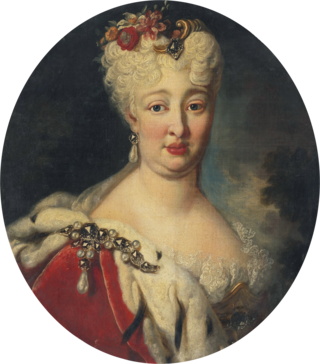
Elisabeth Auguste of Neuburg was the only surviving child of Charles III Philip, Elector Palatine. The Palatinate-Neuburg line became extinct with her father and was succeeded by the Palatinate-Sulzbach line. Her sons with Count Palatine Joseph Charles of Sulzbach would have been the indisputable heirs to the Electorate of the Palatinate, but they all died in infancy. She was the Hereditary Princess of Sulzbach by marriage.
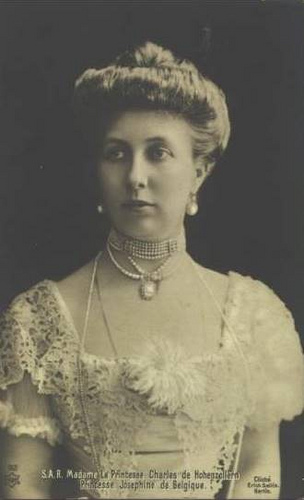
Princess Joséphine Caroline of Belgium was the youngest daughter of Prince Philippe, Count of Flanders and Princess Marie of Hohenzollern-Sigmaringen. She was an older sister of Albert I of Belgium.

Élisabeth Charlotte d'Orléans was a petite-fille de France and duchess of Lorraine and Bar by her marriage to Duke Leopold. She was regent of the duchy during the minority (1729–1730) and absence (1730–1737) of her son and suo jure princess of Commercy 1737–1744. Among her children was Francis I, Holy Roman Emperor, the co-founder of the House of Habsburg-Lorraine.

Charles II August Christian was Duke of Zweibrücken from 1775 to 1795. A member of the Palatine House of Zweibrücken-Birkenfeld, a branch of the House of Wittelsbach, he was the elder brother of the first King of Bavaria, Maximilian I, and of Queen Amalia of Saxony.

Princess Marie Luise Alexandra Karoline of Hohenzollern-Sigmaringen, later Countess of Flanders, was a princess of Hohenzollern-Sigmaringen, later simply of Hohenzollern. She married Prince Philippe, Count of Flanders, second son of King Leopold I of Belgium, and she was the mother of King Albert I.

Archduchess Maria Leopoldine of Austria-Este, was an Electress of Bavaria as the second spouse of Charles Theodore, Elector of Bavaria.

Elisabeth Auguste of Sulzbach was the eldest granddaughter of the Elector of the Palatinate Charles III Philip, and by her marriage to Elector Palatine Charles IV Theodore, Electress Palatine and later Electress of Bavaria.
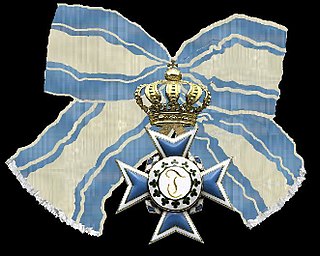
The Order of Theresa was an order for noble ladies in the Kingdom of Bavaria. It continues to function today as an honorary society to which belong the princesses of the House of Wittelsbach as well as other ladies from Bavarian noble families.

Anna Maria Franziska of Saxe-Lauenburg was the legal Duchess of Saxe-Lauenburg in the eyes of the Holy Roman Emperor, the overlord of Saxe-Lauenburg, from 1689 until 1728; however, because her distant cousin George William, Duke of Brunswick-Lüneburg, conquered the duchy by force in 1689, she exercised no control over the territory, instead living in her manors in Bohemia.
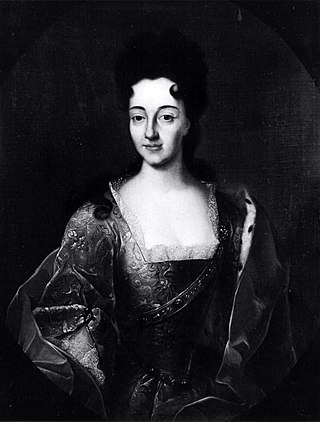
Princess Maria Eleonore of Hesse-Rotenburg was Landgravine of Hesse-Rotenburg by birth and was the Countess Palatine of Sulzbach by marriage. She is an ancestor of Albrecht, Duke of Bavaria.
Princess Amalia or Princess Amalie may refer to:
